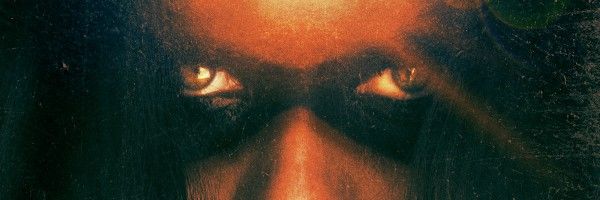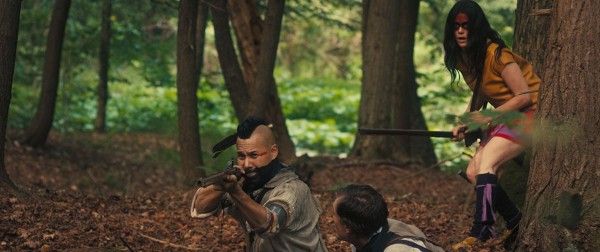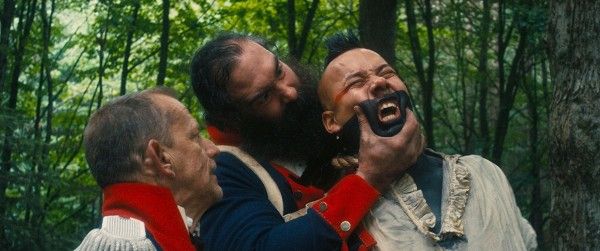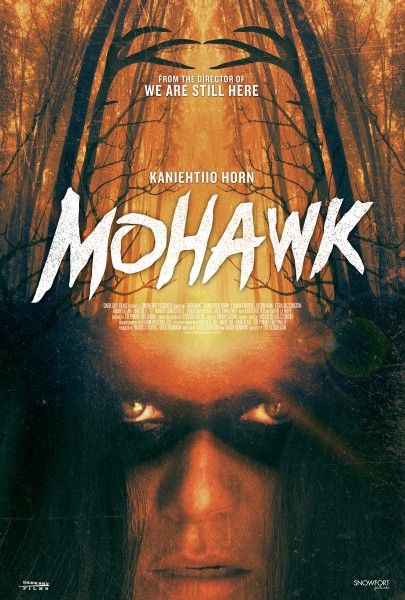History is horror in Ted Geoghegan’s Mohawk; a brutal, angry revenge thriller that takes a familiar format in new directions while wearing its wounded, political heart on its sleeve. Far removed from the domestic depression and supernatural terrors of Geoghegan’s impressive directorial debut We Are Still Here, Mohawk takes us to the woods of New York during the war of 1812, where the wartime violence boils over in a cavalcade of atrocities.
The film stars Kaniehtiio Horn as Oak, the daughter of a Mohawk tribe leader engaged in a polyamorous relationship with two men; her fellow tribesman Calvin Two Rivers (Justin Rain) and a British arms dealer sympathetic to the Native American plight, Joshua Pinsmail (Eamon Farren). Their unusual dynamic isn't emphasized, but it is refreshing, especially in the subversive, unexpectedly supportive dynamic that plays out between the two men. With the war raging around them, Joshua encourages the Mohawk fight back against the American slaughter, but the tribe favors neutrality. Calvin takes matters into his own hands, acting on Joshua’s advice with a grim act of guerrilla resistance against a troop of American soldiers. When the deed is done their brothers in arms come back with a vengeance, striking fast, and Geoghegan drops us right into the chaos.
The American platoon is a ragged bunch, led by Hezekiah Holt (Ezra Buzzington), a high-ranking soldier fueled by blood thirst and bigotry, who leads his men into peril and hideous deeds time and time again. There's his impressionable adolescent son Myles (Ian Colletti), the ragged-voiced tracker Sherwood Beal (Robert Longstreet), a big bearded fellow with a soft heart and a bad knee, Lachlan (The WWE’s Luke Harper using his real name, Jon Huber), and the skittish dandy translator Yancy (Noah Segan), who speaks of the founding fathers with longing admiration while closing his eyes and turning his back on unspeakably inhumane acts of violence. And even though Mohawk may not be the traditional horror fright fest fans might expect after We Are Still Here, Geoghegan invokes his genre roots when depicting those acts of violence, dishing up some premium practical effects and more than one cringeworthy piece of painful imagery.
All of the soldiers are cowed by Holt, a portrait of weak men who reluctantly but all too easily commit war crimes in the face of a self-righteous, charismatic charlatan. He makes a fine villain, lashing out in moments of aggression and manipulation that sets off an avalanche of violence around him. Holt's motives are simple -- it's not hard to put your finger on racist warmongering and hateful violence -- but Geoghegan and co-writer Grady Hendrix avoid making him a simplistic character. To the contrary, they give him a soul, making him a much more fascinating monster in the process.
Mohawk’s time period occasionally strains at the confines of its budget, sometimes in performance, more often in costuming or production design. There's also a disappointing lack of strategy in the main characters, and despite how often we're this is Mohawk turf and those white boy soldiers better watch out, our heroes are constantly making unwise attacks and wide open retreats that come across as narrative shorthand to keep the action rolling along.
But the rougher patches and shoestring budget fade into the background because Geoghegan immerses you in a live-wire atmosphere that pulses with danger. Kaniehtiio Horn isn’t just the lead actress, a First Nations Mohawk who grew up on the Kahnawake Reserve, Horn also served as a cultural consultant on the film, ensuring that Geoghegan and Hendrix’s well-researched script was as authentic as possible. And while the wartime setting largely remains in the background, Geoghegan and Hendrix use the intricate overlapping cultures and conflicts of the time to create a woodsy Wild West where allies or enemies might be waiting around every corner, be it a rowdy pack of American soldiers on the lookout for Red Coats or a French trapper desperately trying to protect his property. Geoghegan convinces you danger lies in wait at every turn, keeping his shots wide and distant, inviting the viewer to search the frame for any sign of menace. Mohawk's first two acts often feel like the cinematic manifestation of always looking over your shoulder.
When the film careens into supernatural territory, it loses a bit of that well-wrought tension, conjuring instead a more primal excitement and terror, elevating the cycle of revenge to the paranormal in gruesome fashion. It's here where fans of We Are Still Here will see the most direct parallels, though Mohawk trades grief for rage, and you can bet there are some delightfully gory bits along the way. What becomes clearest in film's final act is that Geoghegan is a filmmaker with an exciting, discernible voice -- a singular quality of tone and aesthetic that translates between two disparate genres and visual motifs. There's a raw talent in his films that hasn't been fully harnessed yet. With Mohawk, all that unrefined creative energy is unleashed in a scathing tale of cruelty and vengeance that manifests as equal parts classic revenge thriller, historical lesson in genocide, and political statement; a bit messy, but consistently thrilling, surprising, and most of all, unique.
Rating: B-




